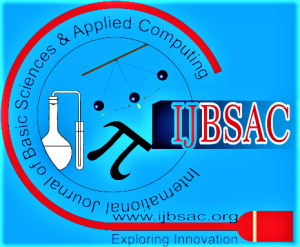![]()
Bayesian Networks for Learner Modeling
Anouar Tadlaoui Mouenis1, Khaldi Mohamed2, Aammou Souhaib3
1Mr. Anouar Tadlaoui Mouenis, Abdelmalek Essaâdi University, Faculty of Sciences, Laboratory of Informatics, Research Operational and Statistic Applied (Lirosa), Tétouan, Morocco.
2Prof. Khaldi Mohamed, Abdelmalek Essaâdi University, Faculty of Sciences, Laboratory of Informatics, Research Operational and Statistic Applied (Lirosa), Tétouan, Morocco.
3Prof. Aammou Souhaib, Abdelmalek Essaâdi University, Faculty of Sciences, Laboratory of Informatics, Research Operational and Statistic Applied (Lirosa), Tétouan, Morocco.
Manuscript received on August 06 2014. | Manuscript Received on August 14, 2014. | Manuscript published on August 20, 2014. | PP: 5-9 | Volume-1 Issue-1, August 2014
Open Access | Ethics and Policies | Cite
© The Authors. Published by Lattice Science Publication (LSP). This is an open access article under the CC BY-NC-ND license (http://creativecommons.org/licenses/by-nc-nd/4.0/)
Abstract: Bayesian networks tend to be increasingly used for the management of uncertainty in modelling of the learner. They have been successfully used in many systems, with different objectives. However their use as part of the cognitive process modelling raises a number of problems. On the one hand the underlying semantics of arcs is often not clearly explained, and on the other hand the evolution of the knowledge structure is not taken into account. Our work focuses on the question of the orientation of the arcs, and more generally on the structure of Bayesian network modeling of the learner. We try to show in this work how this question is crucial. In addition, the issue of structural adjustment in the network behavior of the learner sometimes had been suggested, and while different results from cognitive psychology attests to the existence of structural differences by level of expertise. The central hypothesis of our work is that has been a link between the structure of the learner model and level of expertise. We present our probabilistic graphical models of multi-networks to take into account several networks within the same model. The experiments presented in this work are arguments in favor of our hypothesis on the link between the level of expertise of the learner and the structure of Bayesian network.
Keywords: Bayesians Networks, cognitive diagnosis, Learner modeling.
